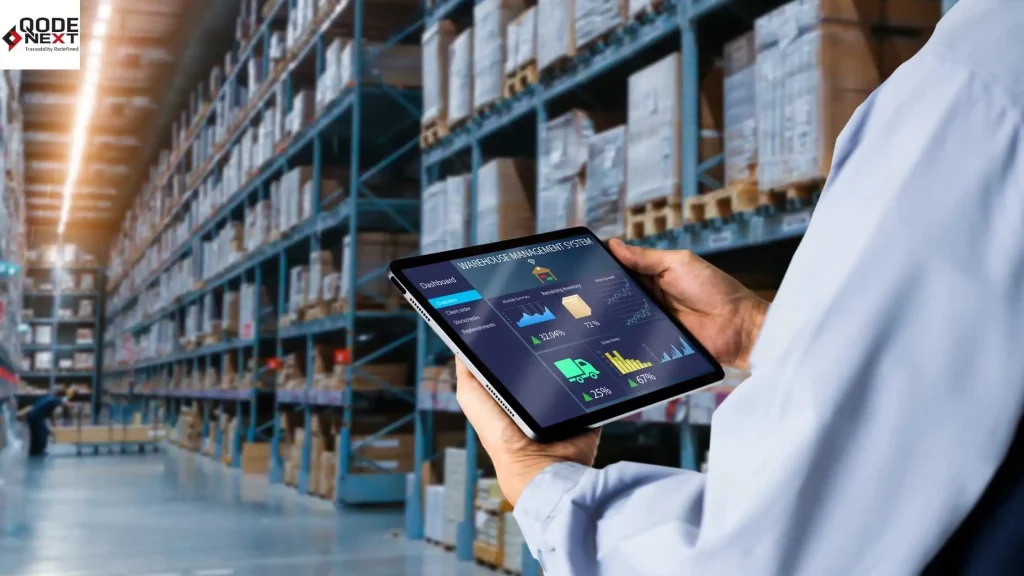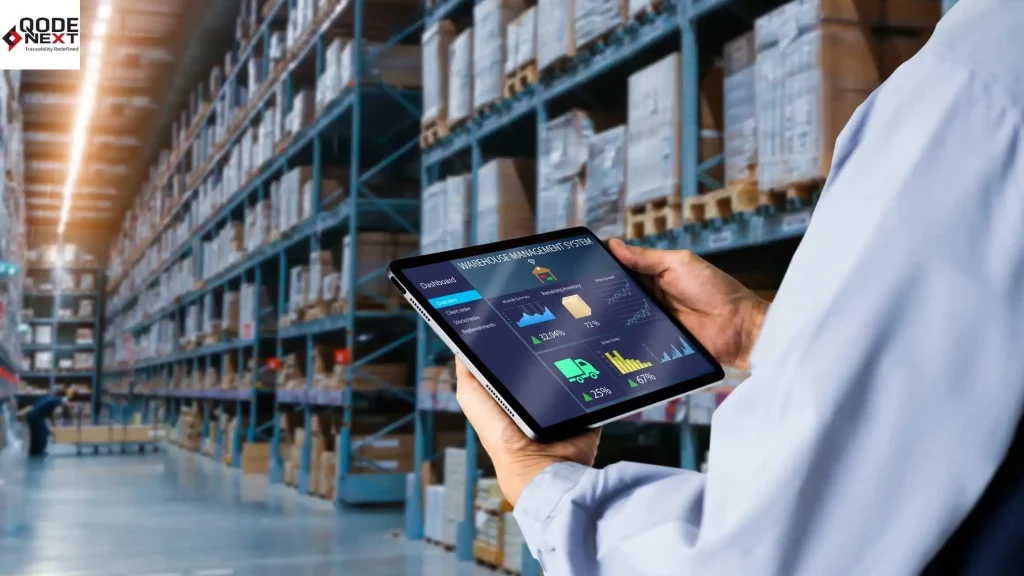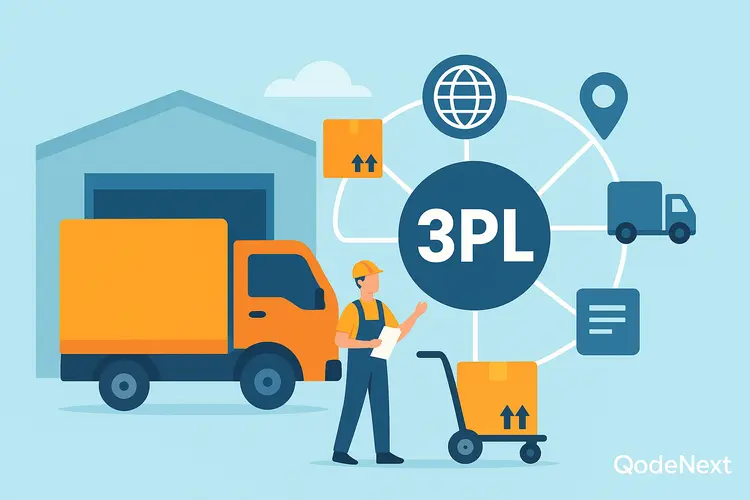As the world advances towards technology, mobile inventory management has emerged to tackle complex tasks on the go. A smartphone helps you handle a large volume of products, eliminating the risk of mistakes.
Companies manage huge resources, increasing the chances of manual errors. An inefficient inventory system can lead to utter chaos and decreased customer satisfaction. Mobile applications enhance seamless tracking of product data, helping you build a robust inventory system.
Let’s explore mobile inventory and its growing role in stock optimization.

What Is Mobile Inventory Management?
Mobile inventory management refers to the use of mobile devices such as smartphones, tablets, or handheld scanners to monitor, track, and control inventory in real-time. These systems integrate with inventory management software to provide seamless data synchronization, enabling businesses to manage stock levels, orders, and shipments from virtually anywhere.
By leveraging cloud-based technology, businesses can ensure data accuracy, operational agility, and improved decision-making in their inventory processes.
Key Features of Mobile-Based Inventory Management Systems
A robust mobile inventory management system offers various features that enhance inventory operations. Here are some of the key features:
1. Real-Time Inventory Tracking
This systems provide real-time visibility into stock levels. Businesses can monitor stock movement, replenishment needs, and sales trends instantly, reducing the risk of stockouts or overstocking.
2. Barcode and QR Code Scanning
With built-in 2D barcode or QR code scanning capabilities, mobile inventory systems simplify stock identification and data entry. Employees can quickly scan products to update stock levels or process shipments.
3. Integration with ERP and POS Systems
Mobile inventory management integrates seamlessly with enterprise resource planning (ERP) and point-of-sale (POS) systems, ensuring that sales and inventory data remain synchronized across platforms.
4. Cloud-Based Accessibility
Cloud-based mobile inventory management allows users to access data from any location, enabling remote teams to stay updated on inventory status and collaborate efficiently.
5. Automated Alerts and Notifications
Inventory management software with mobile apps can send automated alerts for low stock levels, order delays, or replenishment requirements, ensuring proactive decision-making.
6. Analytics and Reporting
Advanced analytics features offer actionable insights into sales trends, inventory turnover, and supplier performance, helping businesses make data-driven decisions.
Benefits of Mobile Inventory Management for E-Commerce and Wholesale Businesses
Here are the main benefits of mobile device inventory management.
1. Enhanced Operational Efficiency
By automating repetitive tasks such as stock updates, order processing, and shipment tracking, mobile inventory management reduces manual errors and saves time.
2. Improved Accuracy
Barcode and QR code scanning minimize human errors in data entry, ensuring that inventory records are accurate and reliable.
3. Cost Savings
Mobile inventory systems help optimize stock levels, reducing holding costs and minimizing losses due to overstocking or stockouts.
4. Real-Time Collaboration
With cloud-based accessibility, teams across different locations can access and update inventory data simultaneously, improving collaboration and responsiveness.
5. Better Customer Experience
Accurate stock data ensures that customers receive their orders on time, enhancing satisfaction and loyalty.
6. Scalability
As businesses grow, mobile inventory management systems can easily adapt to handle increased inventory and transactions, making them ideal for scaling operations.
How Mobile Inventory Management Software Works?
Supply chain managers must understand the functionalities of mobile inventory systems. It typically operates through the following steps:
- Stock Entry: Products are entered into the system using barcode or QR code scanning.
- Data Synchronization: Inventory data is synchronized with a central database through cloud-based software.
- Order Processing: When a customer places an order, the system automatically updates stock levels and triggers order fulfilment.
- Real-Time Monitoring: Managers can monitor inventory levels, shipment statuses, and sales trends through a mobile app.
- Replenishment Alerts: The system sends notifications for low stock levels, ensuring timely restocking.
Steps to Implement a Mobile Inventory Management System
Here are the 5 crucial steps to implement mobile-based inventory tracking.
Step 1: Evaluate Business Needs
Identify your inventory challenges and operational goals to choose a system that meets your specific requirements.
Step 2: Choose the Right Software
Select mobile inventory management software that offers essential features such as real-time tracking, barcode scanning, and ERP integration.
Step 3: Train Your Team
Provide comprehensive training to employees to ensure they can effectively use the system for inventory management.
Step 4: Migrate Data
Once you’ve installed the new system, transfer the existing data into the database. Ensure accuracy during this process to avoid discrepancies.
Step 5: Monitor and Optimize
Regularly monitor the system’s performance and gather feedback from your team to identify areas for improvement.
Challenges in Mobile Inventory Management
While this management offers numerous benefits, businesses may face some challenges during implementation:
1. Initial Costs
Investing in mobile devices, software, and training can be costly initially, but the long-term savings outweigh these expenses. However, organisations might be wary of the initial expenses.
2. Technical Issues
Connectivity problems, software glitches, or device malfunctions can disrupt operations temporarily.
3. Resistance to Change
Employees accustomed to traditional methods may resist adopting new technology. Proper training and communication can help overcome this hurdle.
Best Practices for Mobile Inventory Management
To maximize the benefits of mobile inventory tracking, follow these best practices:
- Leverage Automation: Automate repetitive tasks to reduce manual errors and save time.
- Use Real-Time Data: Rely on up-to-date data for decision-making to avoid inaccuracies.
- Set Replenishment Levels: Establish minimum stock levels to trigger automatic alerts for restocking.
- Regular Audits: Conduct periodic inventory audits to verify system accuracy and identify discrepancies.
- Invest in Reliable Hardware: Use durable and efficient mobile devices for seamless operation.
FAQs – Mobile Inventory Management
What is the mobile inventory app?
Mobile inventory app refers to the use of mobile devices and scanning software to monitor, track, and manage inventory in real time. It integrates with cloud-based systems for seamless data synchronization.
Is there an app to keep inventory?
Yes, there are ERP systems that can be tracked via a smartphone app. It enhances operational efficiency, reduces manual errors, improves accuracy, and provides real-time visibility into inventory levels, ensuring timely order fulfilment and better customer satisfaction.
How do I manage my inventory remotely?
Implement remote tracking technologies like RFID, QR code, and barcode scanners. Use electronic shelves and cloud-connected inventory tools to monitor stock daily.
What is virtual inventory control?
Virtual technologies digitally monitor inventory without physical data storage. It relies on cloud connection and mobile apps to read, analyse, and monitor stock data.
How do barcode and QR code scanning work in inventory management?
Mobile-based inventory management systems using QR codes allow employees to quickly update stock levels, process shipments, and verify product information, reducing manual errors and saving time.
Conclusion
Imagine a mobile taking care of your business, managing inventory, eliminating dead stock, and tracking order deliveries. This is the power of mobile inventory management which helps you tackle challenges head-on. For further assistance in inventory management, get in touch with Qodenext today.







